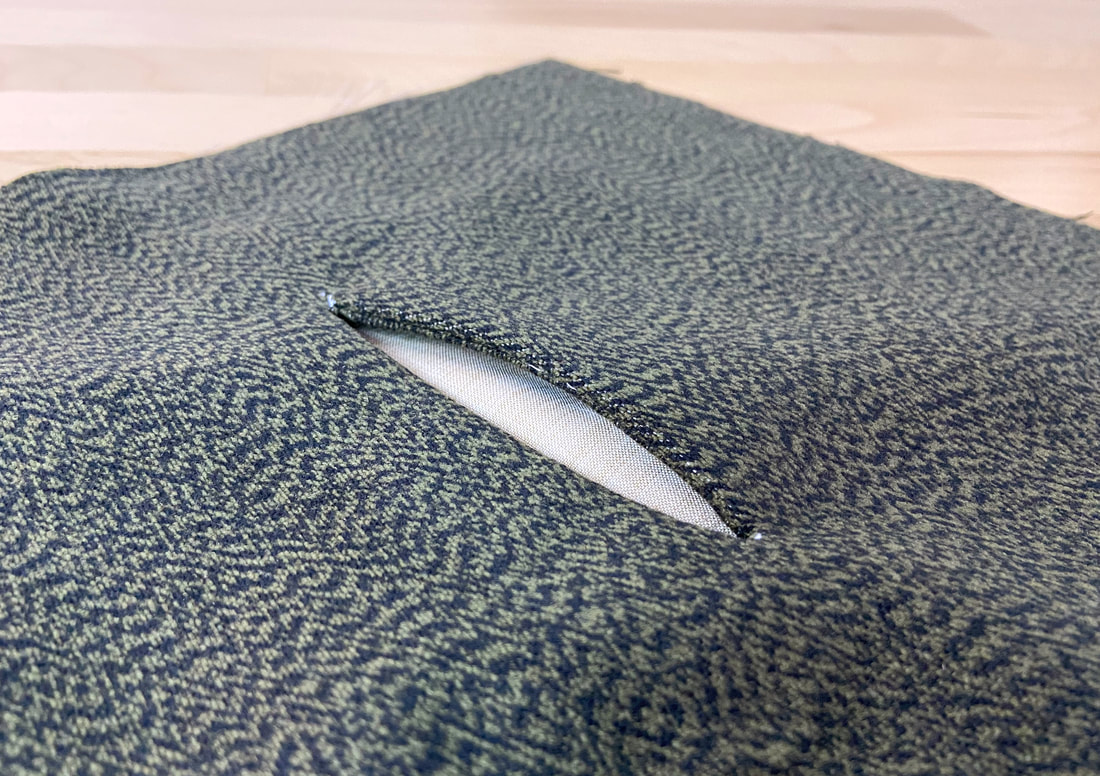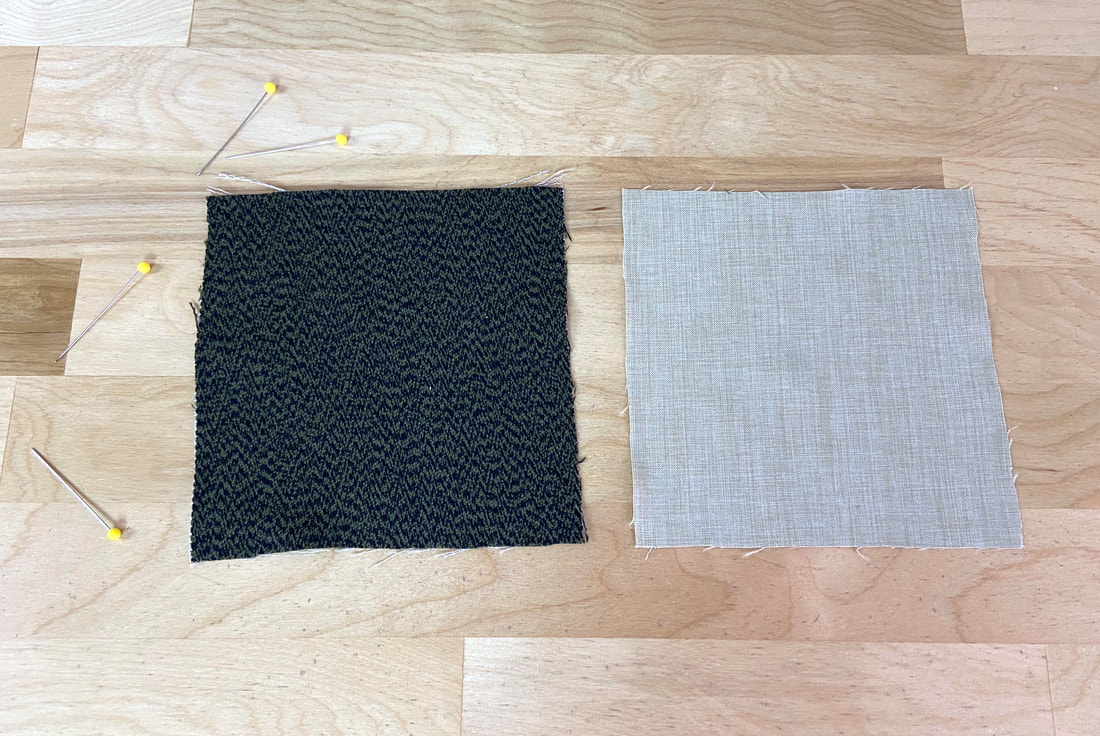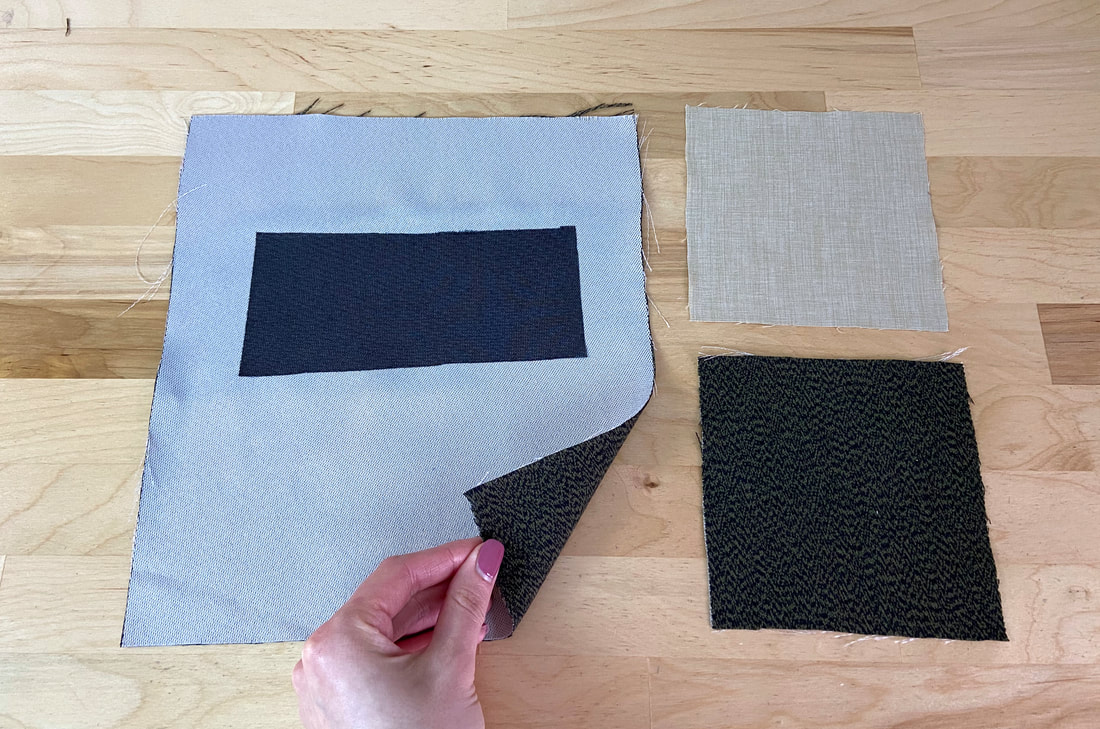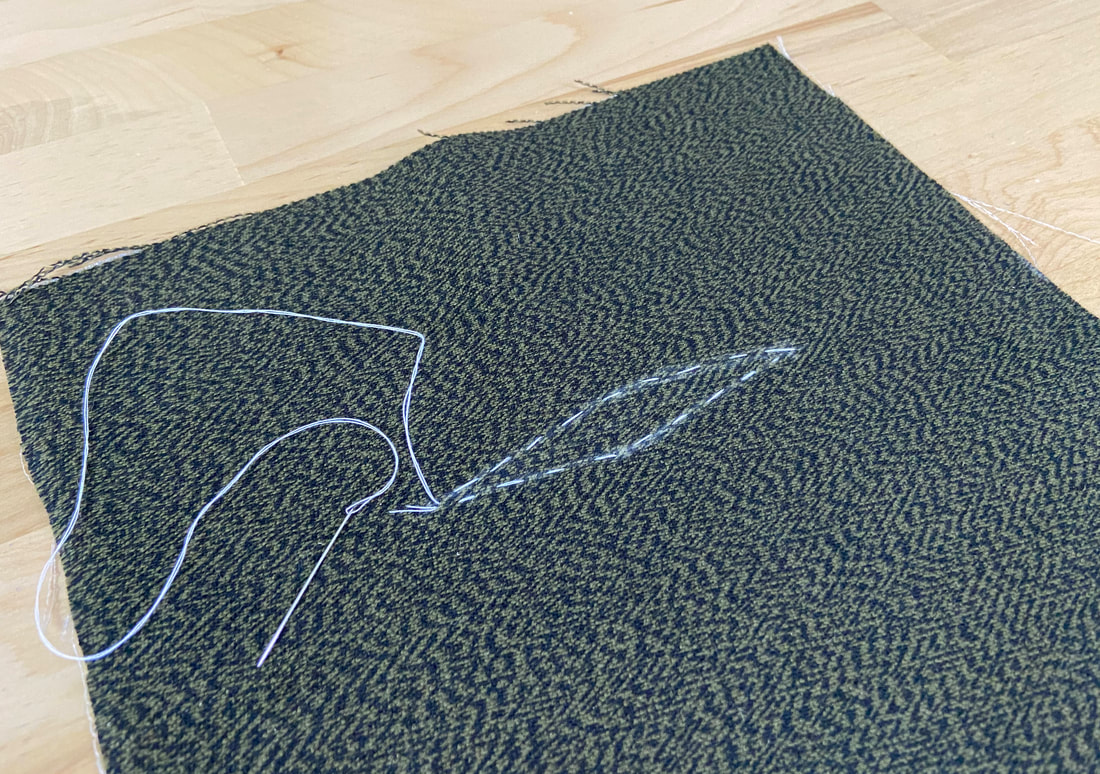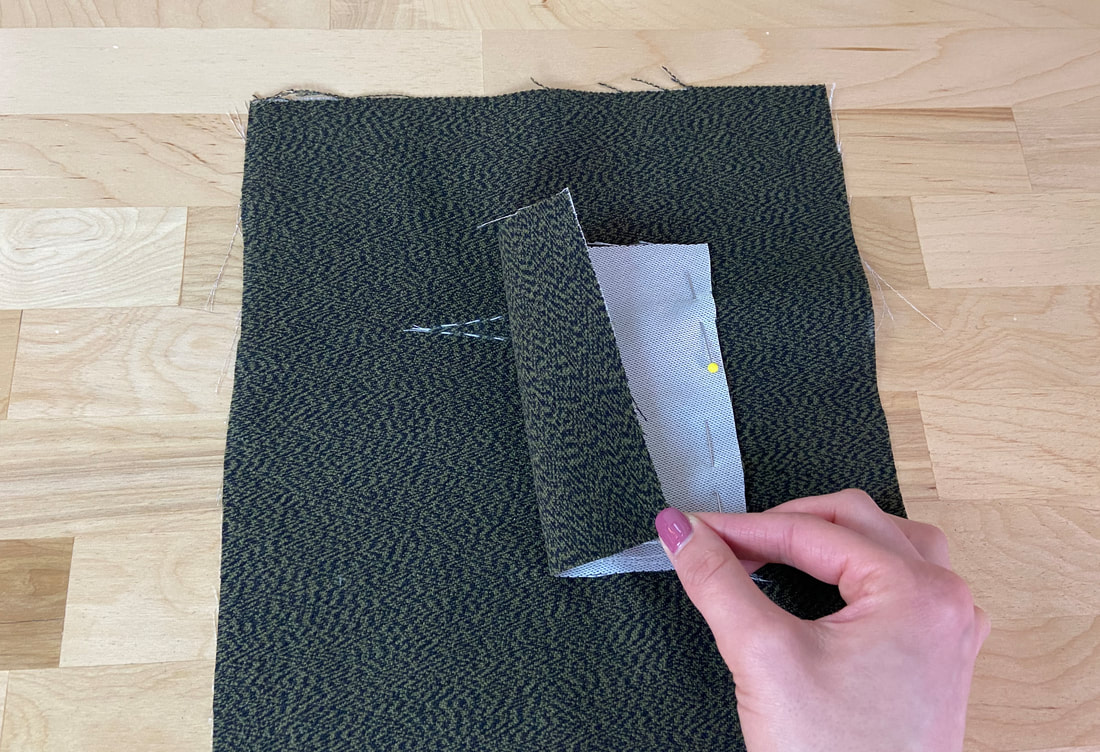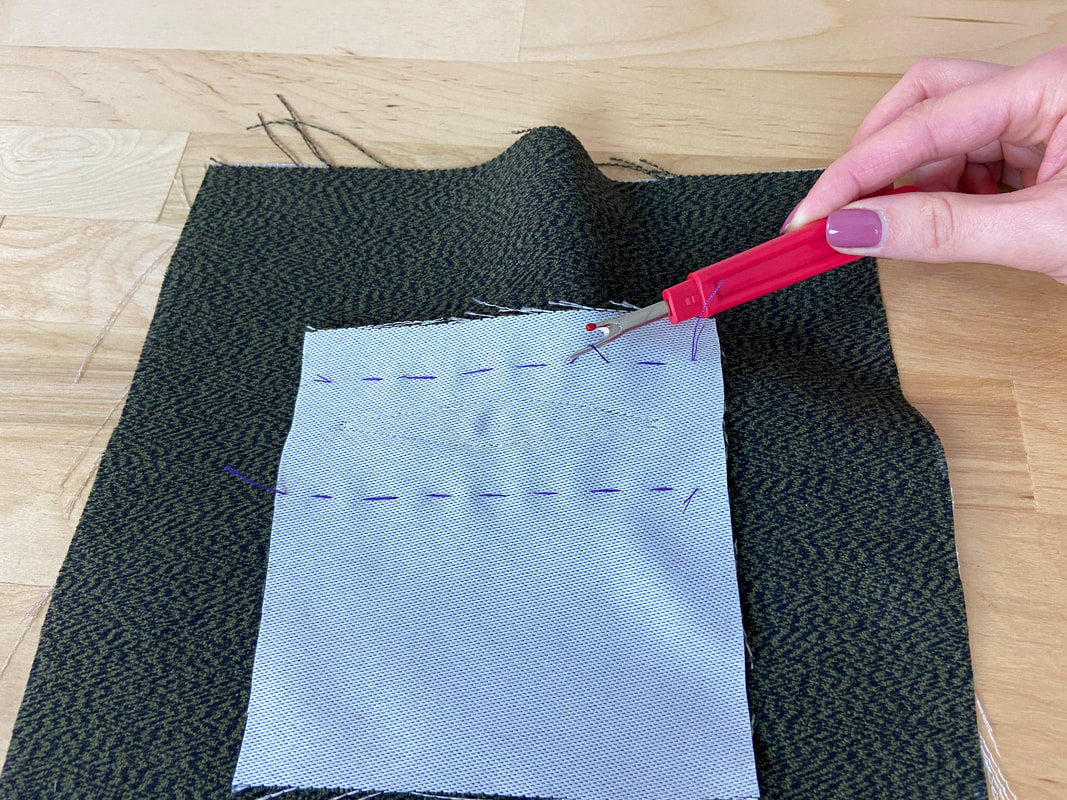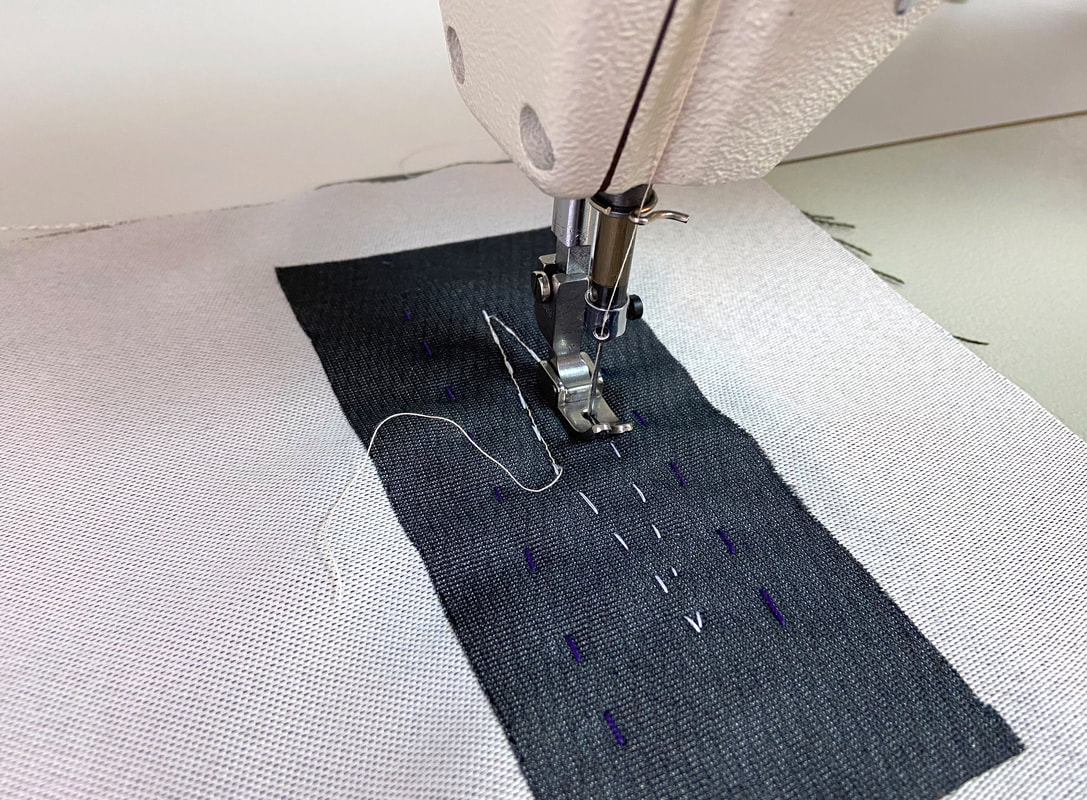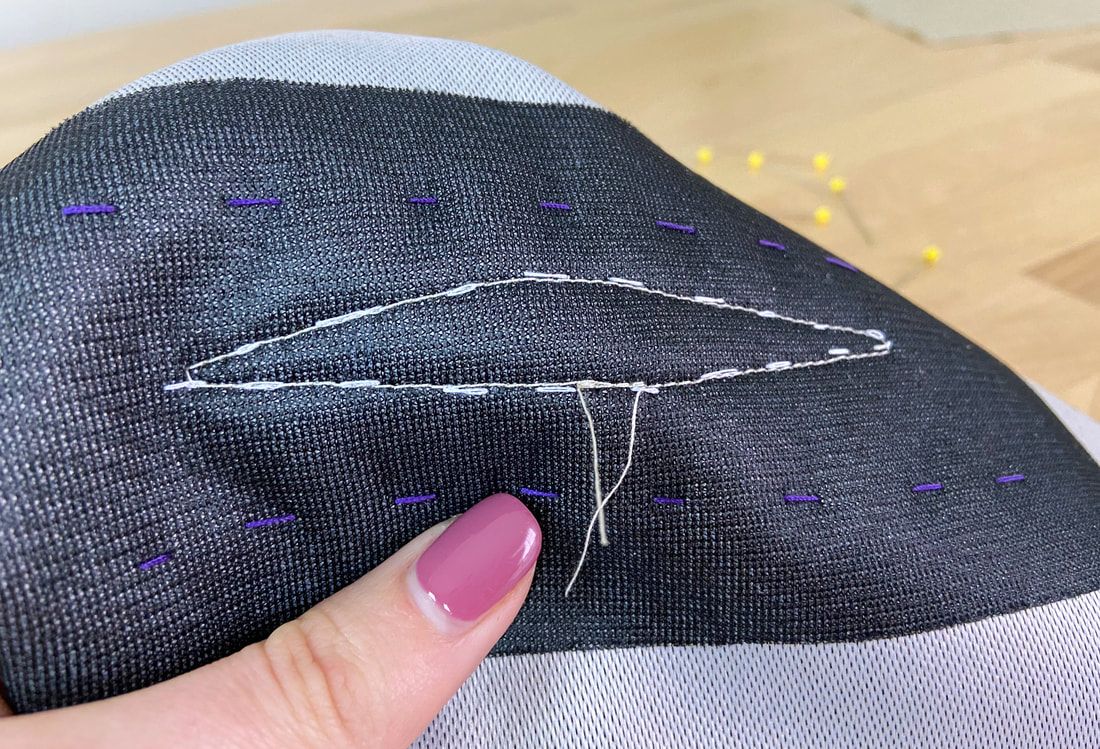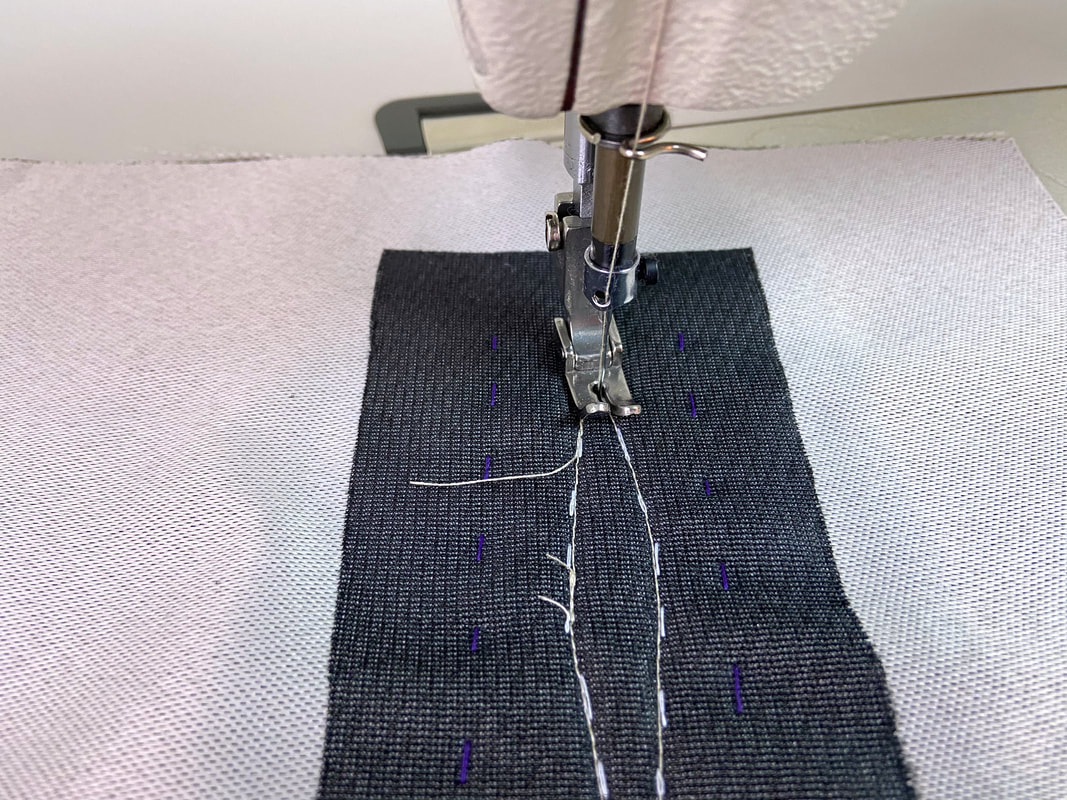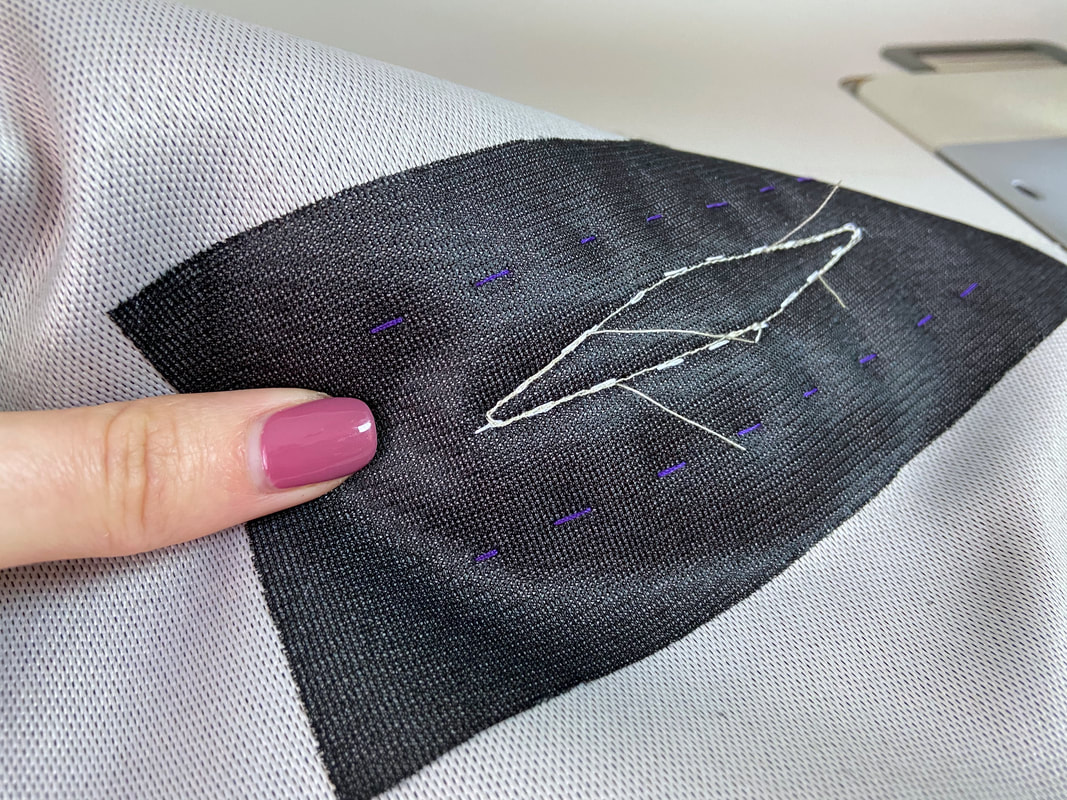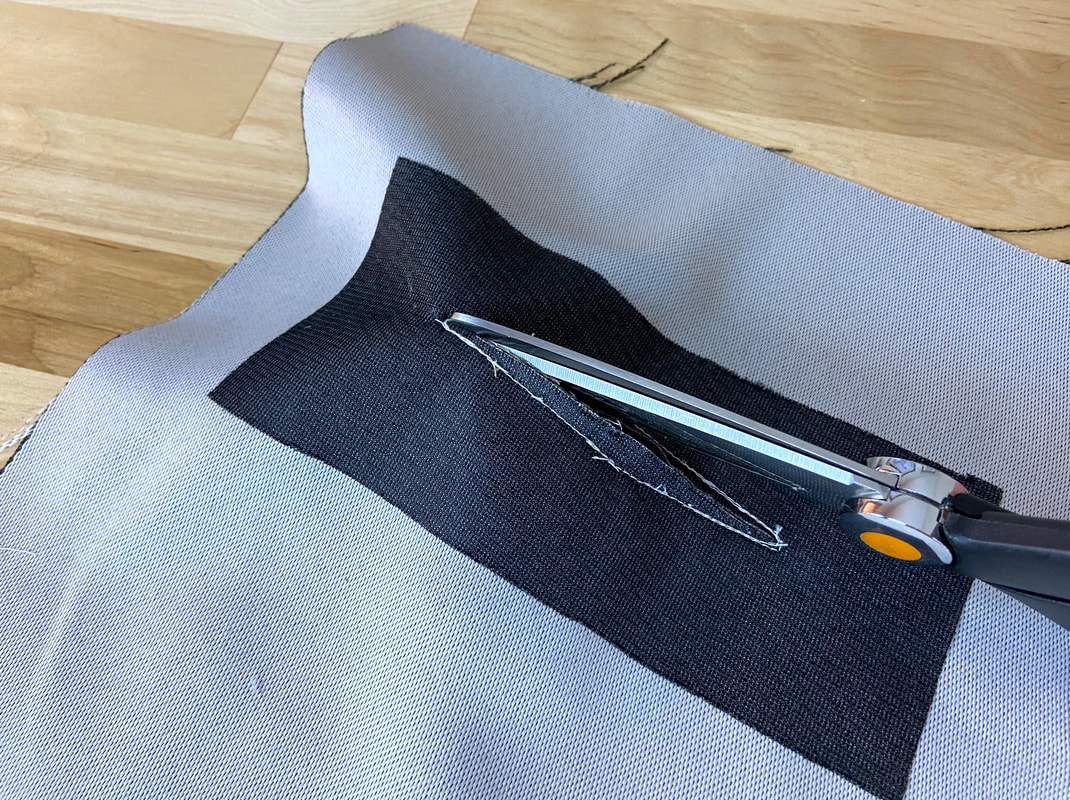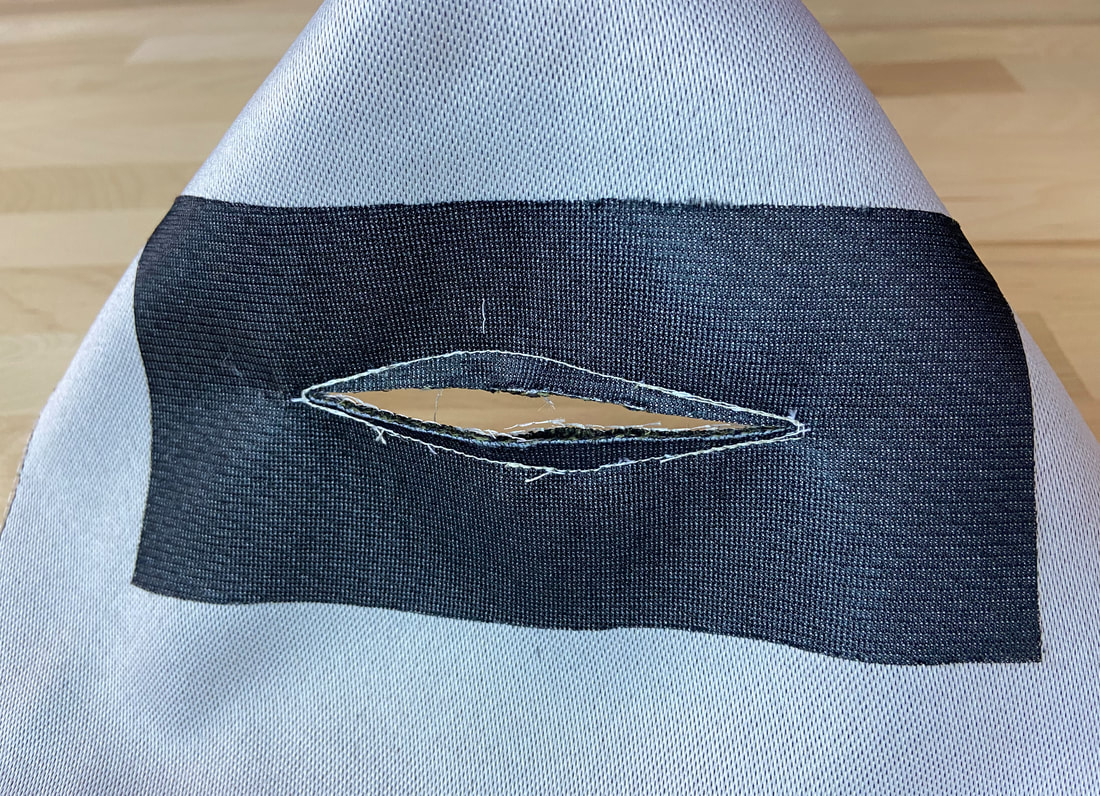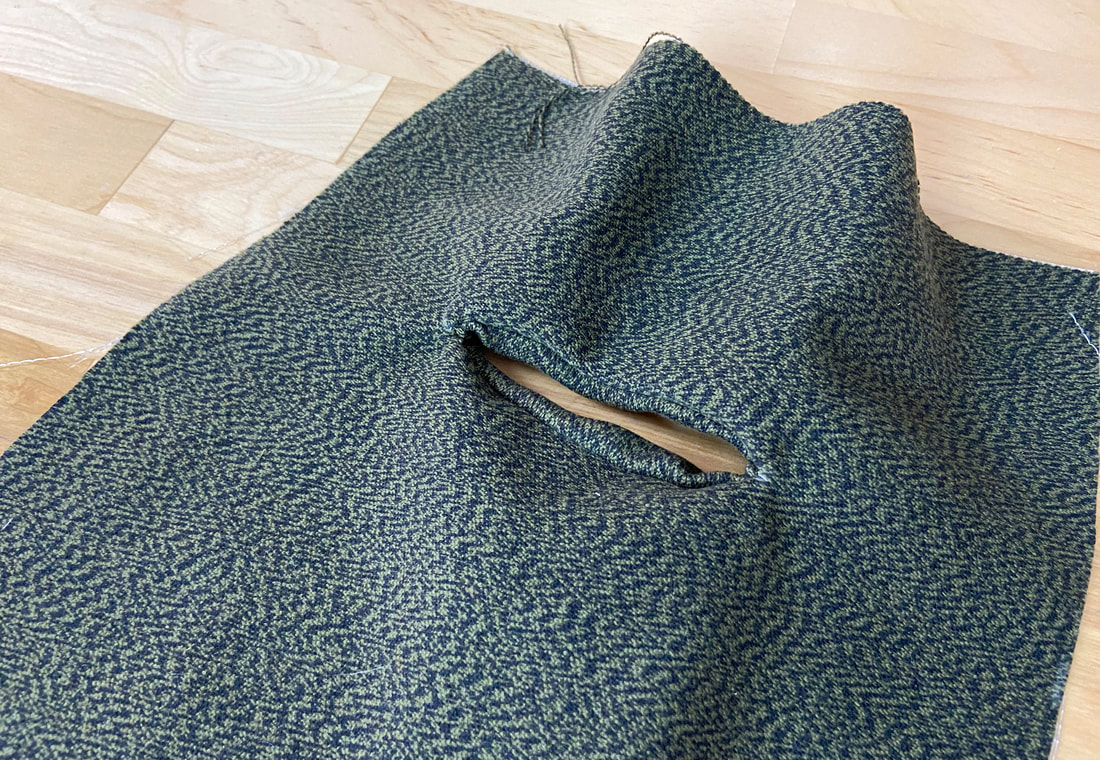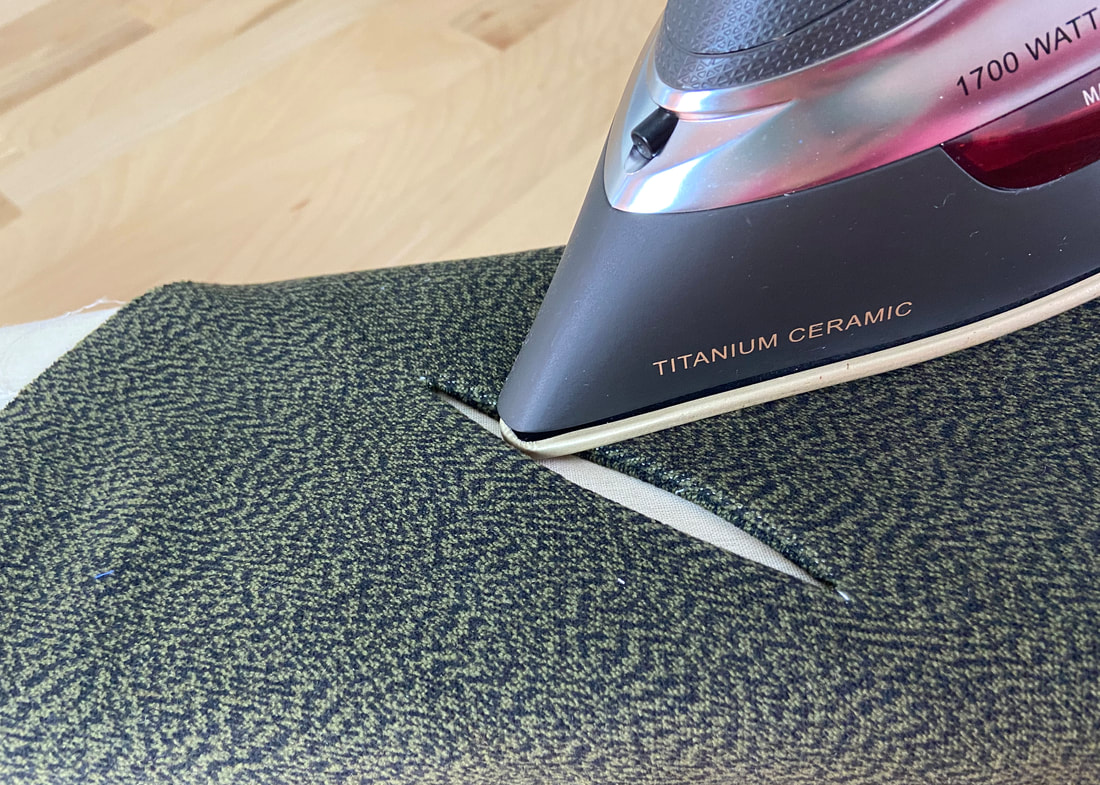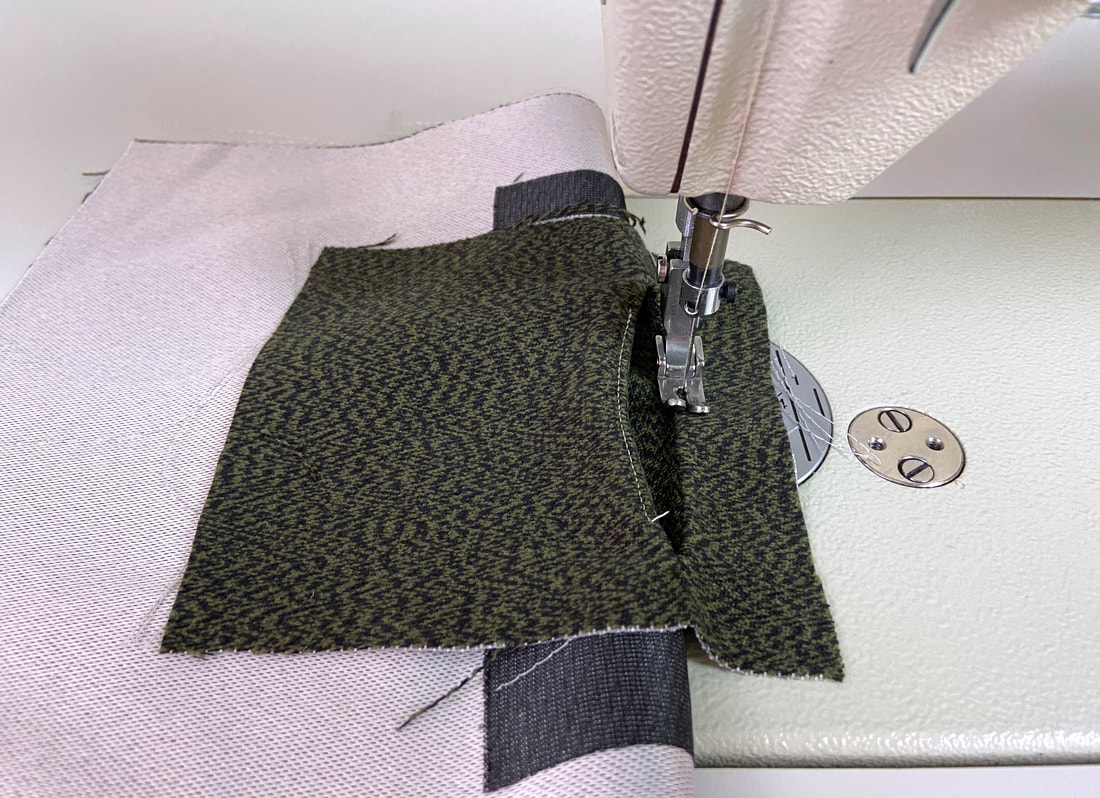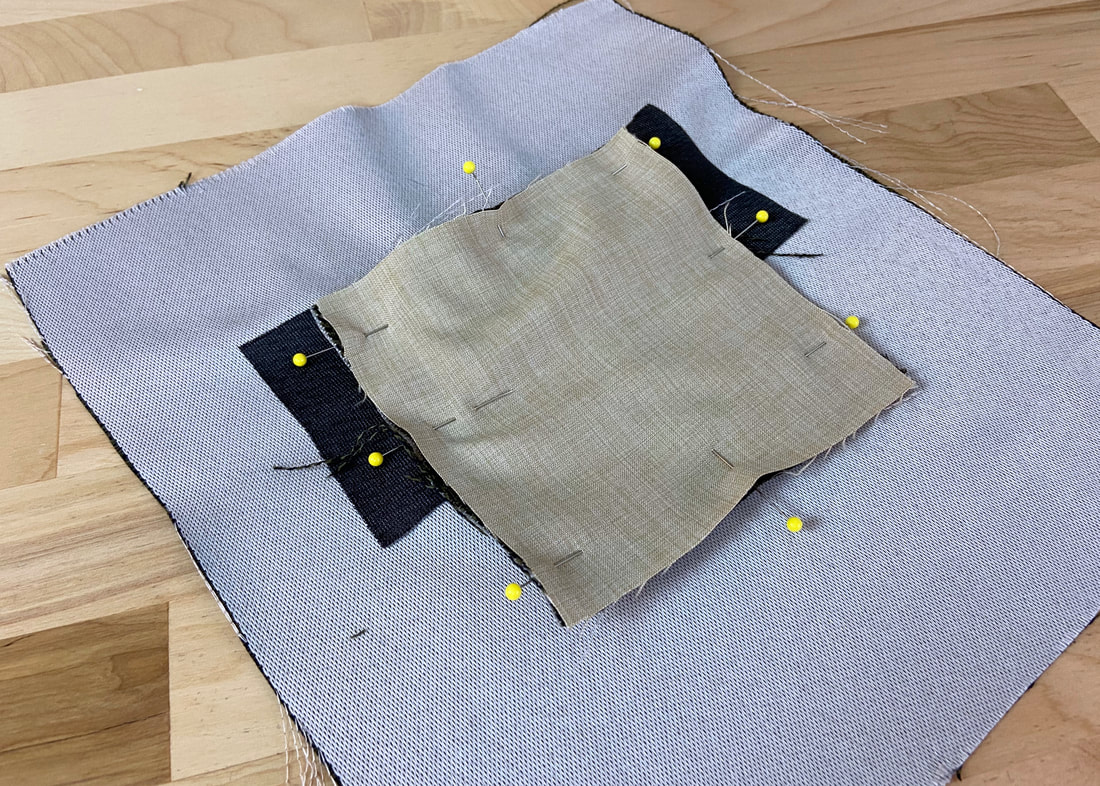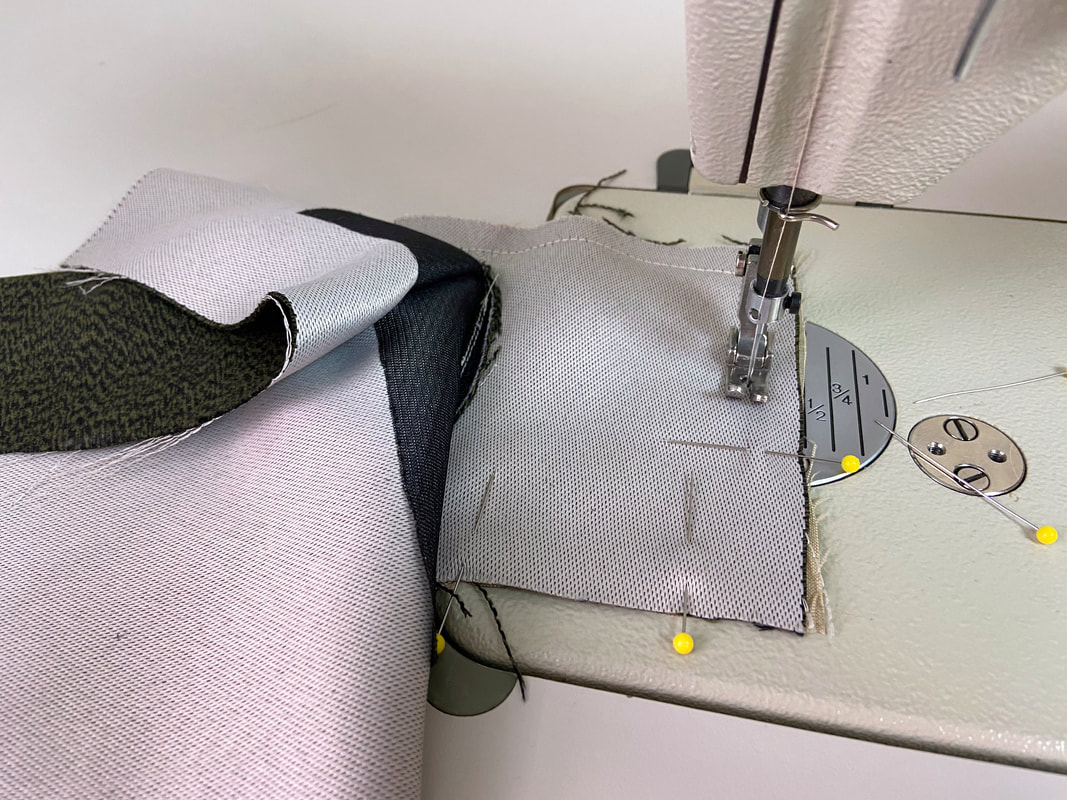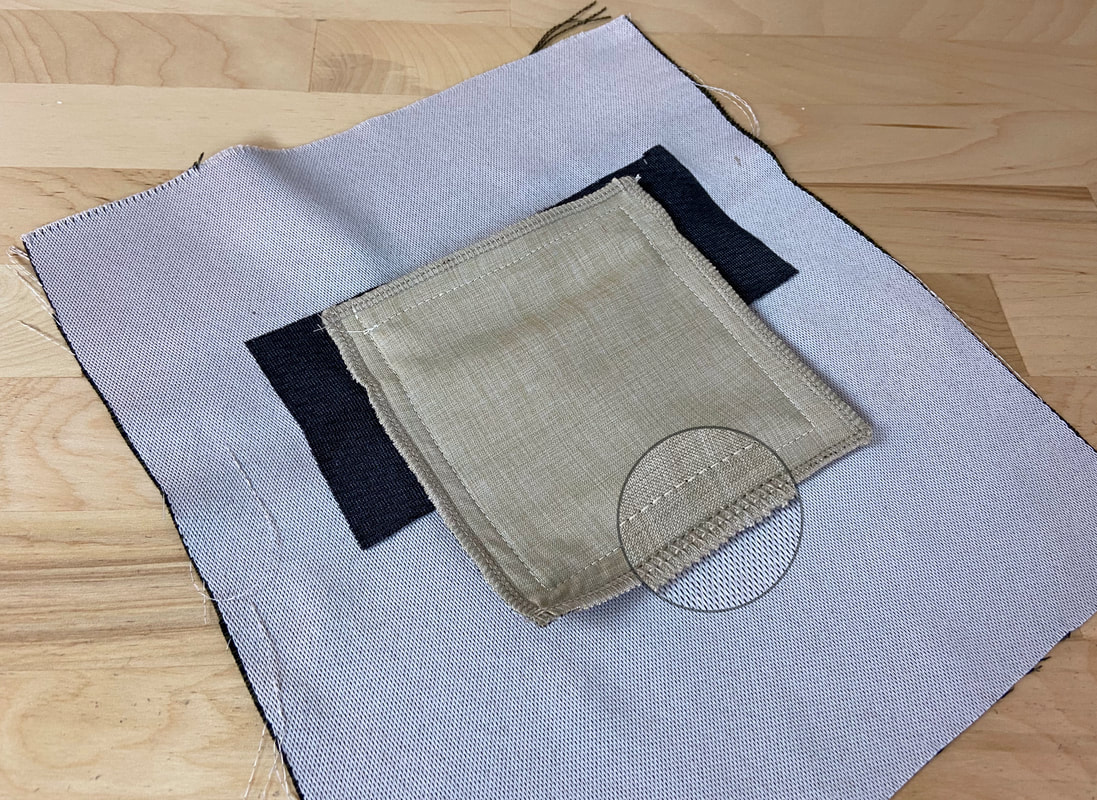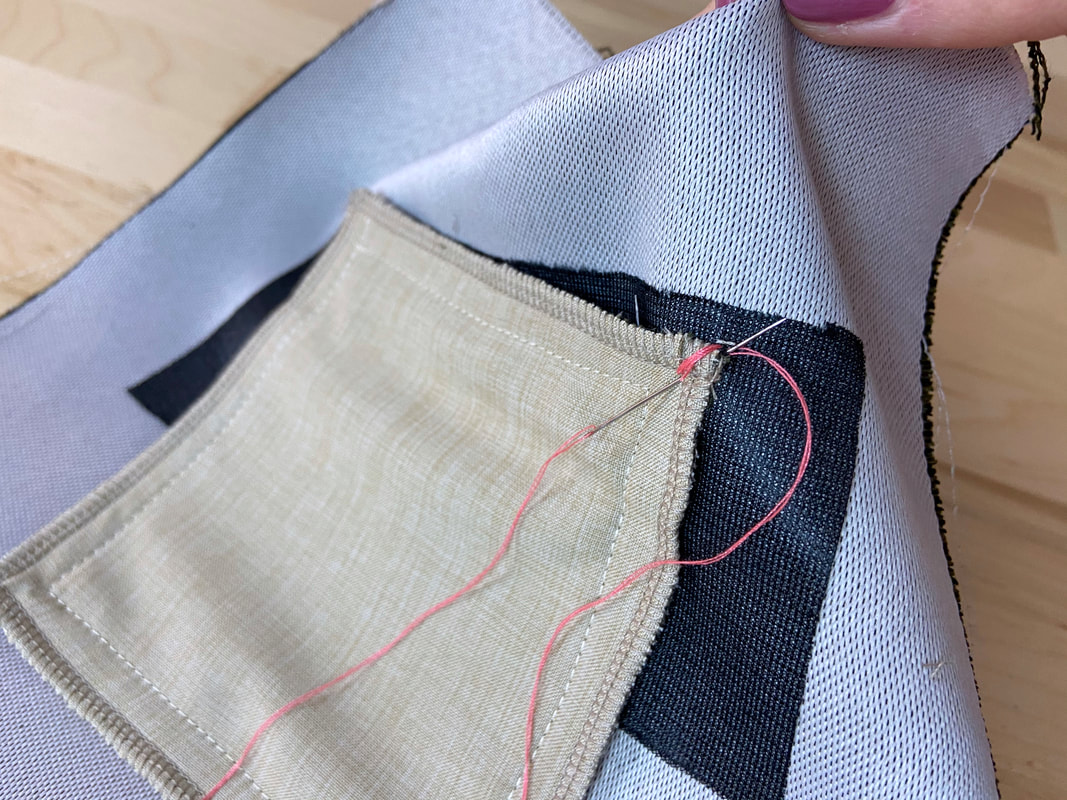In this example, the pocket opening measures 4”.
The two identical pocket pieces are 5” in width and 5” in length (1” plus 4” pocket depth). The facing is cut from the same fabric as the garment while the pocket piece is cut from contrast fabric.
1. Add interfacing to the wrong side of the garment at the exact pocket location. The interfacing should be about 2” larger on all sides.
2. Next, hand baste the exact pocket opening slit shape on the face of the garment. You may need to use tailors chalk to jot down the initial marks prior to hand basting.
In this case, the pocket opening is an extended, thin oval shape that has two sharp angles on each side. This is a pocket style that provides a great design element but is less functional and durable.
3. With the garment on its right side, center one of the pocket pieces to the hand basting lines such that the face sides are touching. The top edge of the pocket piece should be approximately 1” away from the top hand basting line as shown.
Insert a few pins to keep the layers together then hand baste for extra security.
4. Flip the garment on its wrong side and using a shorter stitch setting, machine stitch the pocket opening following the hand basting lines. Stitch at a thread’s width from the hand basting.
Overlap the beginning and end of the stitches to lock the threads.
5. Add another row of stitching overlapping the existing stitches at each pocket corner. The second stitch should extend at approximately 1” from each corner point.
Remove the temporary hand basting at this point.
6. Now for the tricky bit: slash through the middle of the pocket opening, careful cutting into each corner. Slash as close as you can to the corner but be careful not to cut through the actual stitching.
7. Pull the pocket layer to the garment’s wrong side through the slashed opening as shown. Pull the edges to smooth out the finished opening. If the pocket puckers at the corners, that means it needs to be slashed even closer the stitched corner.
8. Iron the pocket opening edges flat.
9. Understitch the pocket facing and seam allowance layers underneath along both top and bottom pocket edges as shown.
10. With the garment on its wrong side, align the other pocket piece on top of the stitched one such that the fabric face sides are touching and all edges align.
11. Stitch at ½” seam allowance to seal the pocket bag edges.
12. Apply and overedge stitch to clean-finish the pocket bag. Both a zigzag or serging stitch will work in this case.
To keep the top pocket bag corners from dropping down, slip-tack them to the garment's underside as shown.

